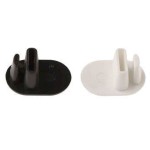How to Build Patio Steps Using Pavers
Constructing patio steps with pavers is a practical and aesthetically pleasing way to connect different levels of your outdoor living space. Paver steps offer durability, versatility in design, and can complement existing paver patios or walkways. This article provides a comprehensive guide to planning and executing a paver step project, ensuring a safe, functional, and visually appealing addition to your landscape.
Before embarking on the project, careful planning is paramount. This includes assessing the site, determining the step dimensions, selecting the appropriate pavers and materials, and adhering to any local building codes or regulations.
Planning and Preparation
The initial step involves a thorough assessment of the area where the steps will be installed. Consider the existing landscape, the traffic flow, and the desired aesthetic. Identify the starting and ending points of the steps, noting any obstructions, such as tree roots, underground utilities, or existing structures. It is vital to contact your local utility companies before digging to ensure that you do not damage any underground lines.
Next, determine the dimensions of the steps. The rise (vertical height) of each step should ideally be between 6 and 8 inches, providing a comfortable and safe climbing experience. The tread (horizontal depth) should be at least 11 inches, allowing sufficient space for foot placement. Uniformity in the rise and tread dimensions is crucial for safety. Use a level and measuring tape to accurately calculate the total rise and run of the steps, ensuring that the dimensions are consistent across all steps.
Selecting appropriate pavers is critical. Choose pavers that are designed for outdoor use and are durable enough to withstand foot traffic and weather conditions. Consider the size, shape, color, and texture of the pavers, ensuring that they complement the surrounding landscape and existing patio or walkway. Common paver materials include concrete, brick, and natural stone. Concrete pavers are often the most cost-effective and readily available option, while brick and natural stone offer a more traditional and aesthetically rich look.
In addition to the pavers, you will need a variety of materials for the base and bedding layers. These include: crushed stone (gravel base), leveling sand, landscape fabric, polymeric sand (for joint filling), and construction adhesive (optional, for securing the top layer of pavers). The amount of each material will depend on the size and number of steps you are building. Accurate material estimation will prevent mid-project delays and ensure that you have sufficient resources to complete the job.
Gather the necessary tools for the project. These include: a shovel, a wheelbarrow, a tamper (hand tamper or plate compactor), a level (at least 4 feet long), a measuring tape, a rubber mallet, a circular saw or paver splitter (for cutting pavers), a broom, a garden hose with a spray nozzle, safety glasses, and work gloves. Having all the required tools on hand will streamline the construction process and improve efficiency.
Before commencing construction, check with your local building department to determine if any permits are required for the paver step project. Adhering to local building codes ensures that the steps are built safely and in compliance with regulations. Ignoring permit requirements can result in fines or the need to dismantle and rebuild the steps.
Step-by-Step Construction Process
The first construction step involves excavating the area where the steps will be built. Excavate to a depth that allows for the compacted base layer (crushed stone), the bedding layer (leveling sand), and the thickness of the pavers. The total excavation depth can be calculated by adding the depth of each layer: base layer (typically 4-6 inches), bedding layer (typically 1-2 inches), and paver thickness. Ensure that the excavation is wider than the finished step width to allow for proper compaction and edge support.
Once the excavation is complete, install landscape fabric at the bottom of the excavated area. Landscape fabric prevents weed growth and helps to stabilize the base layer. Overlap the edges of the fabric to ensure complete coverage. After placing the landscape fabric, pour and spread the crushed stone base layer. Use a wheelbarrow to transport the crushed stone and a shovel to distribute it evenly. Compact the crushed stone using a hand tamper or plate compactor. Compacting the base layer is crucial for providing a stable and level foundation for the steps.
The next step is to install the first course of pavers, which will form the foundation of the steps. Ensure that the base is level and compacted before placing the first course of pavers. Use a level to check the levelness of each paver, and adjust the base as needed. Backfill behind the first course of pavers with crushed stone, compacting it thoroughly. This process will create a solid base for the subsequent courses of pavers.
Add the bedding layer of leveling sand on top of the compacted base and behind the first course of pavers. Spread the sand evenly to a depth of 1-2 inches. Use a screed board to create a smooth and level surface. The leveling sand provides a uniform bedding for the pavers, ensuring that they are properly aligned and supported. Avoid compacting the leveling sand, as this can create an uneven surface.
Carefully place the pavers on the leveled sand, starting with the bottom step and working your way up. Ensure that each paver is level and properly aligned. Use a rubber mallet to gently tap the pavers into place. If necessary, cut the pavers to fit using a circular saw or paver splitter. Leave a small gap (approximately 1/8 to 1/4 inch) between each paver for joint filling. Check the rise and tread dimensions of each step as you progress, ensuring that they are consistent and within the specified range.
Continue building the steps, course by course, until you reach the desired height. Backfill behind each course of pavers with crushed stone, compacting it thoroughly. This will provide additional support and stability to the steps. Ensure that each course of pavers is level and properly aligned. Use construction adhesive (optional) to secure the top layer of pavers, providing added stability and preventing movement.
Finishing Touches and Maintenance
Once the steps are complete, sweep polymeric sand into the joints between the pavers. Polymeric sand helps to lock the pavers in place, preventing shifting and weed growth. Follow the manufacturer's instructions for applying polymeric sand, ensuring that it is properly installed and activated.
After sweeping the polymeric sand into the joints, use a garden hose with a spray nozzle to lightly water the sand. The water activates the polymeric sand, causing it to harden and create a firm bond between the pavers. Allow the polymeric sand to cure completely before using the steps. This typically takes 24-48 hours, depending on the weather conditions.
Inspect the steps for any imperfections or areas that need adjustment. Ensure that all pavers are level and properly aligned. Fill any gaps or cracks with additional polymeric sand. Clean the steps with a broom or garden hose to remove any dirt or debris. Proper maintenance will help to extend the life of the paver steps and keep them looking their best.
Regular maintenance is essential for preserving the appearance and structural integrity of the paver steps. Sweep the steps regularly to remove dirt, leaves, and other debris. Wash the steps periodically with a mild detergent and water. Inspect the joints between the pavers for any cracks or gaps, and refill them with polymeric sand as needed. Repair any damaged or broken pavers promptly to prevent further damage.
During winter months, avoid using de-icing salts on the paver steps, as these can damage the pavers and cause them to deteriorate. Use sand or other non-corrosive de-icing agents instead. Clear snow and ice from the steps regularly to prevent slips and falls.
Consider adding landscape lighting to the paver steps to improve safety and enhance their aesthetic appeal. Low-voltage landscape lighting can be easily installed along the sides of the steps, providing illumination and creating a welcoming atmosphere. Choose lighting fixtures that are durable and weather-resistant. Ensure that the lighting is properly wired and grounded to prevent electrical hazards.
Building paver steps is a rewarding project that can significantly enhance your outdoor living space. By carefully planning and executing the project, you can create a safe, functional, and visually appealing addition to your landscape. Remember to prioritize safety and adhere to all local building codes and regulations. With proper maintenance, your paver steps will provide years of enjoyment and increase the value of your property.

How To Build Patio Steps With Pavers Examples Backyard Patios And Decks

How To Use Stone Pavers Build Steps Rels

How To Build A Stone Step For Your Raised Patio Western Interlock

Paver Step Replacing Concrete Steps Avoiding Shifting

We Show The Way Construct Steps Using Wall Stones With Photos Descriptions Newtown Square Pa From Robert J Kleinberg Landscape Design

Paver Step Replacing Concrete Steps Avoiding Shifting

48 Best Paver Steps Ideas Backyard

Patio Step Design For Corner 3 Steps 94 Wide Stoop Mypatiodesign Com

Gradino Step Block The Simple Paver Western Interlock

How To Build Garden Steps Step By Ilrated Buckinghamshire Landscape Gardeners
Related Posts








